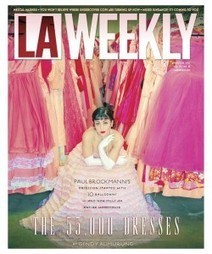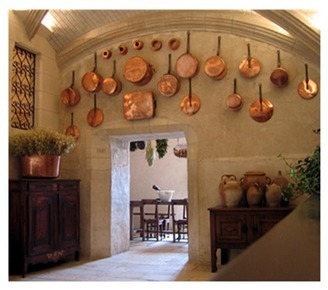Another Blog from Anti-quips – the Collecting Couple
Pick: Have you ever looked back and said “boy, I wish I had bought that!”
Grin: You’d run out of ink in the cartridge before I could print out that list.
P: Oh, really, that many? Give me an example.
G: How about that hotel ice bucket we saw in Chicago. It was silver with the name of the upscale establishment on it. Sure it was way too expensive, but we both really liked it and it sure would impress the guests.
 P: Oh, yes, I remember it well. I also recall a Roseville vase that we passed on. It seemed too costly at the time so we drove off, then talked about it and circled the block. When we pulled up in front of the house, we saw a lady carrying it to her car. What were we thinking?
P: Oh, yes, I remember it well. I also recall a Roseville vase that we passed on. It seemed too costly at the time so we drove off, then talked about it and circled the block. When we pulled up in front of the house, we saw a lady carrying it to her car. What were we thinking?
G: I can’t seem to forget a solid brass telescope we saw at a flea market. It was tagged $25, just lying on a table. I have no excuse for not buying that one!
P: Well, I can top that one. How about the guy at the flea market in Kentucky? He had a table filled with jewelry, said it was his late wife’s and he needed to sell it all. I picked through it and found a lapis azuli necklace (which I still have), but we were anxious to view more of the sale and I just moved on. There could have been a treasure trove there, but we were inexperienced and did not spend enough time checking it out. DUH!
G: Well, we have learned better since then. We now know that it is OK to stay put at one booth at the flea market if there is potential. If there are items of interest, we should stick around for as long as it takes. You never know what the next vendor will offer, it could be a lot less quality and the booth you’re at may just be the best game in town.
P: We have left estate sales that had treasures too – we should have known better, but when you are new to the business, you are anxious to “get on to the next.”
G: As long as we are “self-bashing”, I guess we should talk about the things that we should not have bought too.
P: OK, but first let me admit to the biggest faux pas of our history together. The famous “passing of the wrought iron railing.”
 G: Oh, dear, I have mentioned that one for over 10 years and hate to let our readers know about it, but since you brought it up. There it sat, in the basement of the crinky antique store in northern Wisconsin. A long, ornate railing, made of wrought iron and (we were told) formerly in a local bank lobby. It was a railing from around the teller’s windows. We stood by it a long time, and I was deciding if it would fit in the van, you were deciding if we had enough money set aside for this “high-level” purchase. The end result is that you told me to step away from the railing, it was not going to happen. We talked about it in the van and you won. Well, actually, we both lost. We returned there about 4 months later and, of course, it was long gone. Since then, we have seen other, less fancy railings, in smaller sizes, with fewer sections, selling for many times the cost of that one. But I am quick to forgive.
G: Oh, dear, I have mentioned that one for over 10 years and hate to let our readers know about it, but since you brought it up. There it sat, in the basement of the crinky antique store in northern Wisconsin. A long, ornate railing, made of wrought iron and (we were told) formerly in a local bank lobby. It was a railing from around the teller’s windows. We stood by it a long time, and I was deciding if it would fit in the van, you were deciding if we had enough money set aside for this “high-level” purchase. The end result is that you told me to step away from the railing, it was not going to happen. We talked about it in the van and you won. Well, actually, we both lost. We returned there about 4 months later and, of course, it was long gone. Since then, we have seen other, less fancy railings, in smaller sizes, with fewer sections, selling for many times the cost of that one. But I am quick to forgive.
P: If that is the case, how come every time we are in a shop or mall, you mention it to anyone who will listen?
G: Well, now that the secret has gone world-wide on the “web”, I will drop it from my spiel.
 P: Now, back to your idea of discussing items we should NOT have purchase. Of course, I personally never made that mistake, but several of your buys come to mind. For example, how about the bunch of bottles you bought. They are still gathering dust in the basement. I believe you are responsible for those.
P: Now, back to your idea of discussing items we should NOT have purchase. Of course, I personally never made that mistake, but several of your buys come to mind. For example, how about the bunch of bottles you bought. They are still gathering dust in the basement. I believe you are responsible for those.
G: Well, maybe you should ‘fess up’ to the purchasing of numerous framed art prints. They are too large to ship if sold on the Internet, and awkward to carry to the flea markets. They take up a lot of space. But on a lighter note, you do get to change the décor in our home regularly.
P: Yes, I just shop in the basement boutique!
 G: Another item that we have WAAAYY to much of is the restaurant ware. For a while it was hot and we’d pick up every piece we could find. While there are still collectors out there, we have nearly cornered the market and soon they’ll have to come to us for examples.
G: Another item that we have WAAAYY to much of is the restaurant ware. For a while it was hot and we’d pick up every piece we could find. While there are still collectors out there, we have nearly cornered the market and soon they’ll have to come to us for examples.
P: But, dear, we never paid much for any of it, and many pieces came in box-lots at auctions. We are getting older and our income has become less ‘expendable.’ We may just be serving guests peanut butter and jelly sandwiches off these restaurant plates some day.
G: Or maybe we could find a sharp-shooter who wants to use them for target practice.
P: Some of those heavy-duty Shenango plates are so tough it would take a 44 magnum!
G: In our defense, many items were bought before we became well-informed, or the market trends did an about face. You’ll note that on the TV antique shows, they often state “If you had sold this 10 years ago, it would have brought $5,000, but today, the market has changed and you’d be lucky to get $500.” That’s not our fault.
P: I hate to admit it, but you are right. We have learned from our mistakes and rarely make the same ones. Having said that, let’s head out, rummage season is starting and I saw a few green signs yesterday.
G: OK, but let’s only buy things that will make us rich.
P: Yes, dear. The kids will like that some day when they view the basement and there are only money-makers down there.
Grinin’s Tip To Collectors: When we started to refurbish our home with antiques, from door knobs to stained glass windows, i always had a clip board in the car with every possible size and item I would need. I also have pictures of antique drawer hardware with the clipboard so I can someday match what i need. If you have a space that needs filling on a wall or shelf, have the size with you where ever you go.
I have seen other collectors with record collections, post cards and bus pass collectors pull out their lists to confirm what they have or need.













